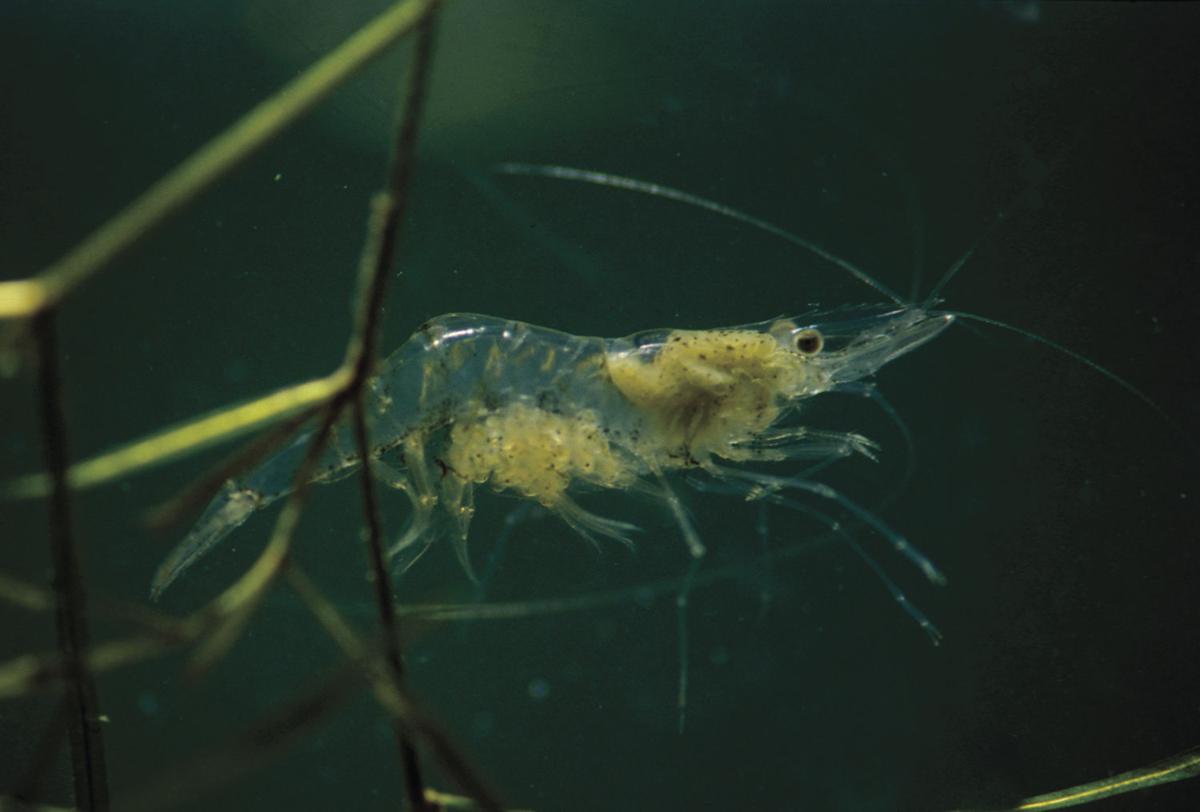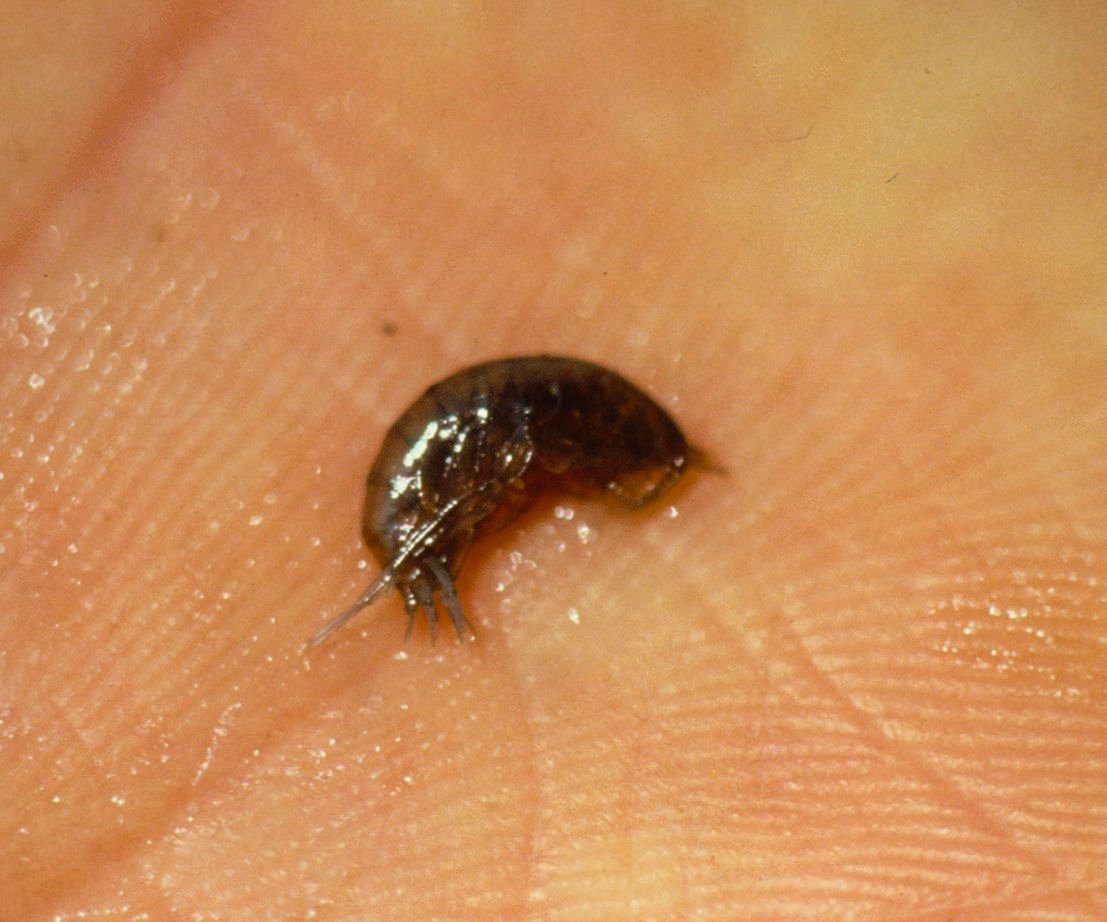I hear comments every winter about some water body producing big yellow perch. The narrative usually goes like this: “The perch there grow so large because of all the freshwater shrimp they eat.”
Many times, the comments refer to someplace other than Nebraska, often someplace to the north. Of course, the belief in the presence of these “freshwater shrimp” obviously is why the fishing is so much better “up there.”
There is a species of freshwater shrimp called the glass shrimp. It is native to southeastern states, but not Nebraska. While Nebraska Game and Parks has introduced glass shrimp into a few of our waters, I do not believe they have been introduced in any of our neighboring states.
Glass shrimp thrive in clear waters with aquatic vegetation. We have had limited success with the introductions in Nebraska. We have had glass shrimp survive and reproduce, but, unfortunately, we have not seen cases where hordes of glass shrimp produced a bunch of fat, fast-growing panfish.
So, what are those little shrimplike things seen in other waters? They are a crustacean, but not shrimp. They are amphipods — or more commonly called scuds.
Amphipods can vary in size. I have seen them just barely big enough to see with the naked eye, up to a little less than one-half inch. They are found pretty much anywhere there is water. There probably is not a water body in Nebraska or a neighboring state that does not have at least some amphipods. And fish love them.
Scuds also are most successful in relatively clean water with aquatic vegetation or flooded vegetation. They tend to be most abundant in waters isolated from fish where they are not all eaten. I have seen waters in Nebraska where after wading my waders would be covered with amphipods. In some cases, the bottom in shallow water literally crawled with scuds. Newly flooded habitats are ideal for amphipods, and a lot of other “bugs” fish like to eat, for that matter.
An abundance of scuds swimming around would be indicative of good water quality, good habitat and probably great conditions for fish, especially panfish. However, the amphipods themselves are not the reason the perch or other panfish are particularly fat and large. They are just a result of the favorable habitat and water conditions from which the fish also benefit.
Most of the amphipods I have seen have been a greenish or gray color. Pinks and oranges also are common. In fact, dead amphipods often are orange in color. They get around by “running” along the bottom or on substrates, but they also swim through the water. Scuds tend to be most active during low-light conditions or after dark.
None of these things really make a big difference. But it does help to understand what makes some fisheries “tick,” and it always helps to understand what predator/prey interactions are happening below the surface.
Johnson County

Shannon Nielsen, Johnson County deer, Sunday morning
First deer hunt

2020 Deer

First deer
Buck Commander
Deer

Double harvest

Logan and his dad both harvested a buck on Monday. They were taken 3 minutes apart and only about 100 yards from each other.
Archery buck

Her mom told her if she got a buck this year she could hang the mount in the dining room, and less than 12 hours later she got this 5x5 during archery season in September.
Shot with 10 minutes left on opening day

This 3x4 buck was shot in Boone County with 10 minutes left on opening day.
Jackson Wichman, Sprague

Jackson Wichman, Sprague
Deshler on Nov. 14

Deshler on Nov. 14
First buck in Boyd County

First buck in Boyd County
11-year-old 9X7

11-year-old 9X7
Boyd County

Boyd County
Deer

Rick Payeur

Rick Payeur
Hunting

Five-point buck

Royce Kreitman got this five-point buck from his land in Otoe County on opening morning.
Awesome hunt in Nebraska
First buck

William Vlcek, 13, from Pawnee City shot his first buck Sunday morning with his dad.
First bucks

Twins Hannah and Haylea Dean of Lincoln, 14, shot their first bucks this weekend in the Sandhills near Crawford while hunting with great-grandpa, fathers and many uncles.
Twins

Twins Hannah and Haylea Dean of Lincoln, 14, shot their first bucks this weekend in the Sandhills near Crawford while hunting with great-grandpa, fathers and many uncles.
Opening morning buck

Jaliesa Maret: "I got this fella opening morning on my family farm in southwest Nebraska, am getting him mounted so I can enjoy his beauty for years to come, but also he will put a lot of meat on the table."
Hunting

Gabriel got his first deer in 2019.
Hunting

Button buck

Hunting crew

February 21, 2021 at 10:30PM
https://ift.tt/2ZFbtKs
Myth of the freshwater shrimp - Lincoln Journal Star
https://ift.tt/3eNRKhS
shrimp





No comments:
Post a Comment